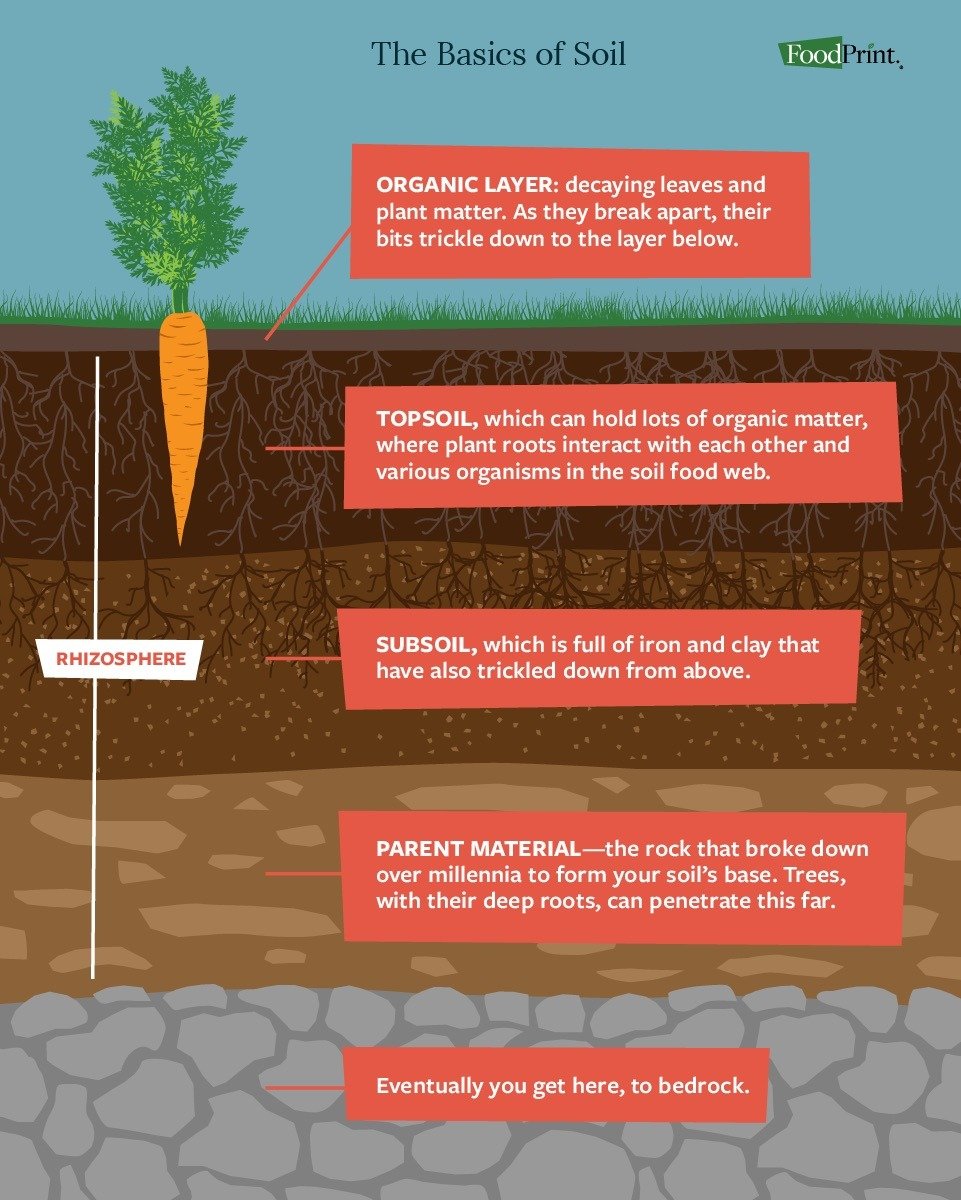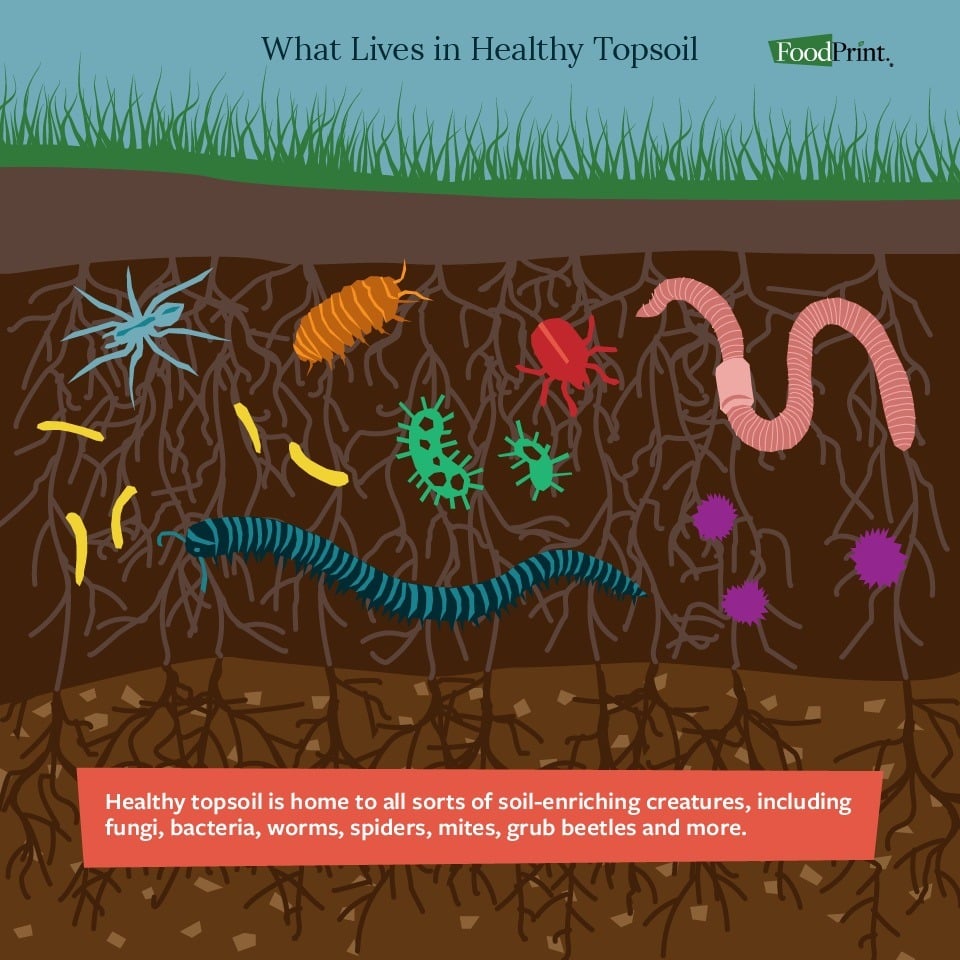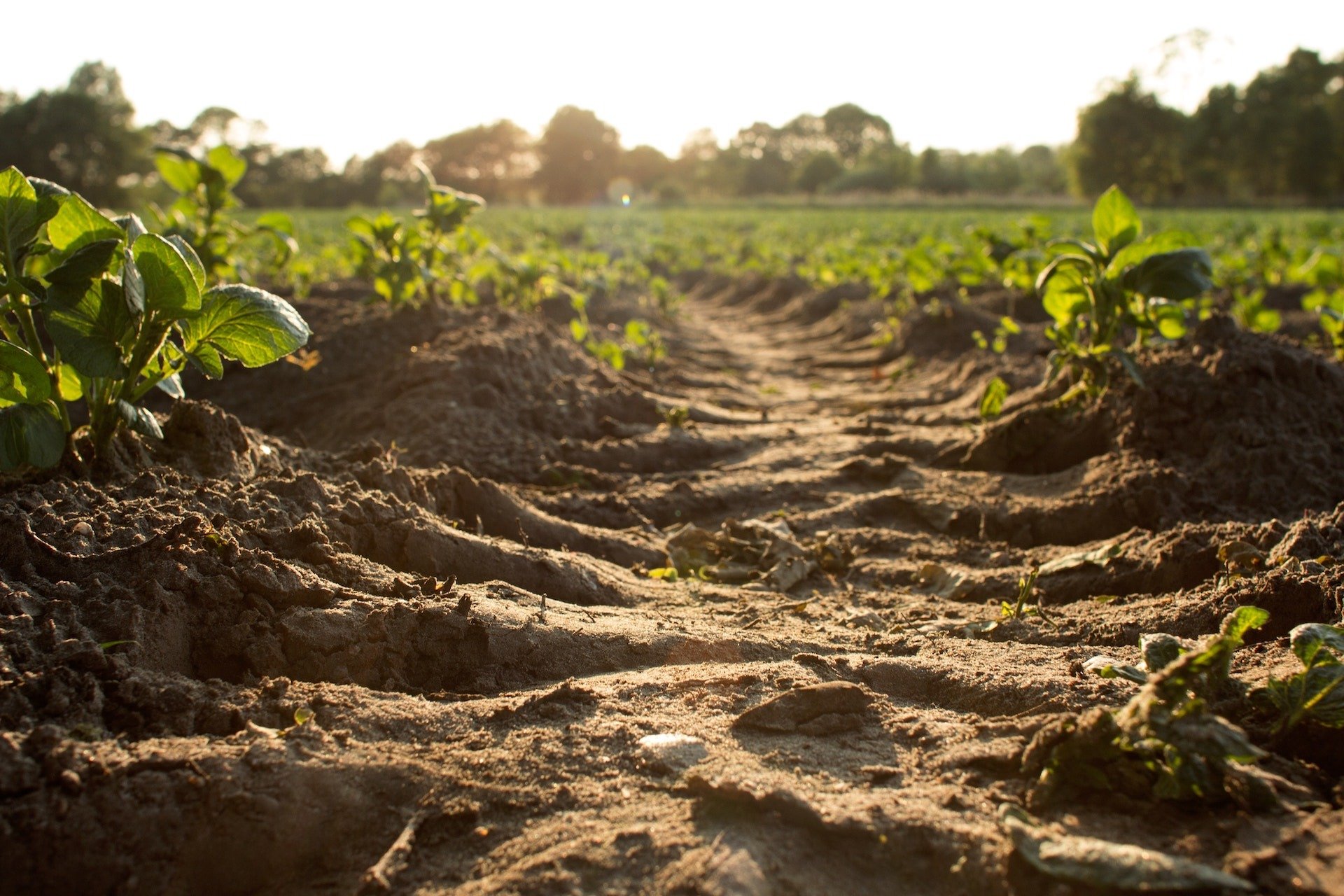What Is Soil and Why Is It Important?
The United Nations has designated December 5 World Soil Day, to bring awareness to the necessity of improving soil health for the good of the planet. Which may leave some folks wondering what, exactly, soil is, let alone why it matters enough to rate its own global day.
The answer to the first part of this question depends who you ask. For a lot of us, there’s no discernable difference between dirt and soil. It’s what we wash off our hands, freak about when it’s tracked in the house, and maybe what we stick the roots of a windowsill-bound basil plant into (that we’ll probably forget to water).
For scientists, farmers, and (real) gardeners, though, soil is a loftier thing. Unlike dirt, which is mostly broken-down rocks that contain minerals like calcium, magnesium, and iron, soil is dirt with the added bonus of bacteria, fungi, protozoa, worms, and insects. These aerate, build structure, and give vital nutrients to soil. Add plants to this mix, and what you get is a complex system called a “soil food web.” It’s alive, and it also supports our life on this planet.
There isn’t just one kind of soil, and the kind of soil you’ve got determines the kind of food you can grow well. Which is to say, if you care about eating, you care about soil. Healthy soil can also help us cope with the precarious effects of climate change on our food system—including by storing a whole lot of carbon. How does it all work? Here we get down—way down—to basics.
What You Can See

What You Can’t See
There are a mind-boggling number of microscopic organisms in your rhizosphere. If you have “good soil,” says soil biologist Elaine Ingham, one gram of it can contain 75,000 species of bacteria, 25,000 species of fungi, 1,000 species of protozoa, and several hundred species of nematodes (small worms).
If you remember food chains from elementary school, soil food webs will sound familiar. Plant roots secrete sugars and organic matter, which are eaten by bacteria and fungi. Nematodes and protozoa eat the bacteria and fungi, parts of which they excrete; then plant roots absorb those nutritious excretions.
Bacteria and fungi are especially important to plant growth, each in their way contributing to its health and its ability to fight off pests and disease. According to Dorn Cox, research director at the Wolfe’s Neck Center for Agriculture & Environment in, Freeport, ME, the fungi that create a network with a plant’s roots “provide feedback between what bacteria in the soil want and what the plants are producing. A huge amount of the energy of plants is not put into their own growth but into feeding their microbiome.”
There are (visible) insects is soil, too. Beetles, earthworms and spiders are eating and also being eaten. When these organisms die naturally, they, too become food for the organisms that remain.

Your Soil Food Web
A soil scientist will tell you that the kind of soil you’ve got depends on the kinds of rocks it started with — its “parent material.” It contains differing amounts of sand, silt, and clay and a variety of minerals. A good combination for food-growing purposes creates loam; the sand in it lets roots penetrate, the clay in it holds moisture.
Pretty much any soil can grow something. But if you want to grow tomatoes, or wheat, or peaches and not just weeds, says Ingham, you’re going to need a balance of organisms in your soil food web. So, if you had an underwhelming harvest of tomatoes this past summer, for example, it’s highly likely you had the wrong ratio of fungi and bacteria in your soil.
Write Jeff Lowenfels and Wayne Lewis in their book “Teaming With Microbes,” “Each soil environment has a different set of organisms and thus a different soil food web.” That’s because, as Mark Kopecky, a private soils agronomist in Florida, explains it, “Plants were designed to be members of a community and every type has its own mix of microbes and other organisms it would like to have growing with it, and they take care of each other,” including alerting each other when there’s a pest problem.
Industrial Agriculture Kills Soil
Unfortunately, Ingham says, the chemicals we use in our industrial food system (which features monocrops of corn, soy and other food plants) wipe out soil organisms. This can happen even in places that have highly fertile soils, such as parts of New Jersey and Michigan, which store a lot of rich organic matter right down with the plant roots. And without the right amounts of beneficial organisms, you get a system that needs a lot of inputs, says Kopecky. It’s a vicious cycle.
The more chemical inputs you add to grow your crop, the more living organisms you destroy, until your left with something that’s a lot like dirt (i.e. soil minus the good stuff). And weather extremes only make this worse.
What Soils Mean for What We Grow and Eat
What we can grow is dependent on a bunch of things, including climate (no one is trying to grow lemon trees outdoors in Maine); available water (beans like it wet, black-eyed peas like it dry); and topography (farming in the Arctic presents challenges). But foods also need certain soil food webs in order to thrive.
Ingham explains that types of soil — and what grows in them — exist on a spectrum, shifting from a high ratio of bacteria, to a high ration of fungi. If you were to start from soil scratch — in the Midwestern croplands that experienced severe flooding this past spring — you could build your way back to soil health in succession, with one sort of crop building up the right kinds of structure and nutrients to lead to the next crop: from tomatoes and broccoli, with lots of bacteria, then on to legumes and barley, with equal numbers of bacteria and fungi, and finally on to herbs and fruit trees, which thrive in fungi-rich soil.
As much as biodiversity is a buzzword for scientists discussing the above-ground health of grasslands, or temperate forests, or deserts, Cox points out that it has critical implications for soil food webs, too. Biodiversity in soil leads to, “not just optimal crop yields but also weed suppression, fire resistance, flood resilience, as well as soil growth,” he says, increasingly critical as climate change wreaks havoc on our landscapes. “All those essential ecosystem services, healthy soil can provide.”
It’s a way of thinking that’s foundational to regenerative agriculture, and one that states are starting to embrace with legislation, and even big food companies are embracing. But soil health is also gaining traction among a diverse cross-section of farmers, who are coming to terms with decreased yields from “dead” soil and the high cost of chemical inputs. As Minnesota grain farmer Tom Cotter points out in a video for agriculture nonprofit Land Stewardship Project, “We need to help make the soil strong for our crops to be strong. [And] there’s only so much you can do with manmade stuff.”
Get the latest food news, from FoodPrint.
More Reading
How can we cut food waste in half by 2030?
September 5, 2024
Are Municipalities Suspending Food Scrap Collection & Drop-Off Due to COVID-19?
May 11, 2020
City Composting 101: Stickers, Bags, and Containers
March 26, 2019
Kondo Your Kitchen
February 5, 2019
Lessons Learned from Launching a Composting Program
November 13, 2017

